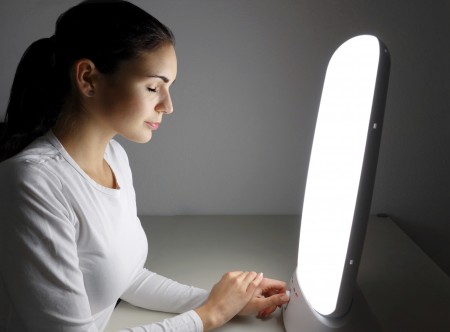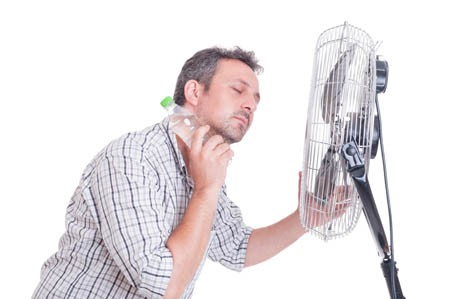Light Therapy Effectively Treats Non-Seasonal Depression
Doctors have known for some time that treatment with high-intensity light (7,000–10,000 Lux) can improve seasonal depression. In an 8-week study published in the journal JAMA Psychiatry in 2015, researcher Raymond Lam compared four different treatment options for non-seasonal major unipolar depression: bright light therapy for 30 minutes per day first thing in the morning, 20 mg of the antidepressant fluoxetine per day, combined bright light therapy and fluoxetine, and a placebo device paired with a placebo pill.
The combination of bright light therapy and fluoxetine produced remission in 58.6% of the participants who received it, compared to remission rates of 43.8% for bright light alone, 19.4% for fluoxetine alone, and 30% for placebo. It is notable that the effects of fluoxetine did not exceed those of placebo, but the effects of light alone did. There were few side effects in any group.
These data provide convincing evidence of the efficacy of light therapy in the treatment of non-seasonal unipolar depression. Use of light therapy for non-seasonal depression should now be more routinely considered, particularly when combined with antidepressant treatment.
Patients who had previously failed to respond to two or more antidepressants and patients with bipolar depression were excluded from the study. Bright light therapy administered in the morning can sometimes bring about mixed states in people with bipolar disorder. A 2007 case study by D. Sit and colleagues in the journal Bipolar Disorders found that midday light led to more improvement and less risk of mixed states than morning light among women with bipolar disorder.
Music, Mindfulness and Exercise Improve Brain Functioning
Psychiatrists should take the lead in endorsing general wellness and encouraging healthy behaviors, says researcher James Hudziak. He suggests that opportunities to practice music, mindfulness, and exercise should be made available to all school children to increase brain health, and that more intensive efforts are necessary for children in families that are at risk for mood and behavioral difficulties or in children who show some dysfunction in these areas. Hudziak has implemented a statewide program in Vermont that encourages families to engage in these healthy practices.
Hudziak and colleagues analyzed brain scans of 232 children ages 6 to 18, looking for relationships between cortical thickness and musical training. They found that practicing an instrument such as the piano or violin increased working memory, gray matter volume in the brain, and the ability to screen out irrelevant noise. Practicing mindfulness increased white matter volume and reduced anxiety and depression. Exercise also increased brain volume and neuropsychological abilities.
Now Hudziak urges parents to advocate for the teaching of music, mindfulness, and exercise in schools as a way of improving general health, especially since music and gym are often the first programs to be cut when schools face budget shortages. Hudziak suggests that opportunities for athletics should be provided to all children, independent of their skill level, rather than only for the best athletes who “make the team.” Intramural teams should be open to all children, including those with less ability or minimal athletic skills. Exercise, teamwork, and friendships benefit all children.
For more information about the programs Hudziak implemented in Vermont, use the internet to search for the Vermont Family Based Approach, see his book Developmental Psychopathology and Wellness: Genetic and Environmental Influences, or call the University of Vermont Medical Center at (802)847-0000 or (800)358-1144.
Another tool that may be useful to parents of children aged 2 to 12 who are at risk for mood disorders is our Child Network, a secure online portal where parents can complete quick weekly ratings of their child’s mood and behavior, which is then graphed over time and can be used to show the child’s doctors how his or her symptoms are fluctuating and how well any treatment is working.
Cool News: Raising Body Temperature Can Relieve Depression
Raising body temperature by a few degrees may produce antidepressant effects as the body’s cooling mechanisms kick in. At the US Psychiatric and Mental Health Congress in 2015, researcher Charles Raison described a study comparing the effects of exposing participants to a special heating coil in a tent that retained the heat until their body temperatures increased by a few degrees to those of a sham procedure that did not raise body temperature. Those participants whose body temperature was increased had a lower body temperature the following day, and their depression improved as their bodies cooled. These improvements lasted six weeks or more.
Depressed patients tend to have elevated body temperatures. Raison suggests that raising body temperatures even more prompts the body’s cooling mechanisms to compensate, bringing cooling activity to normal levels from the skin to the brain and improving depression.




